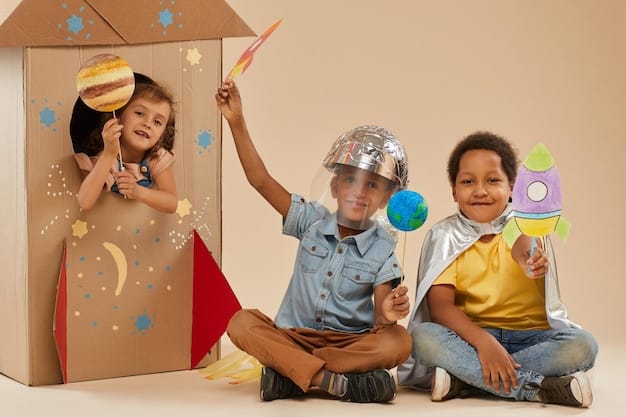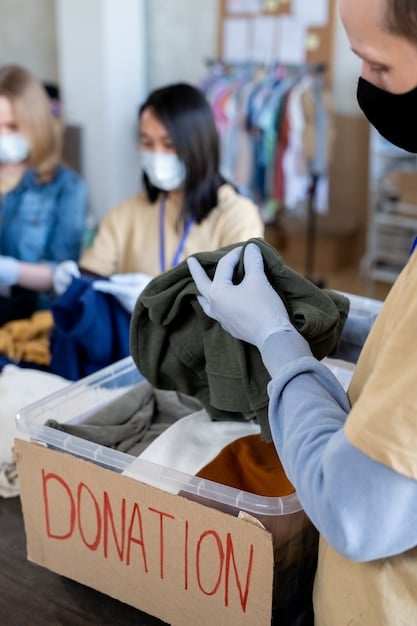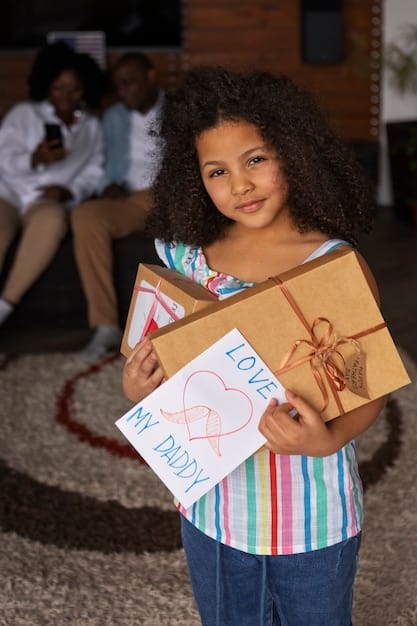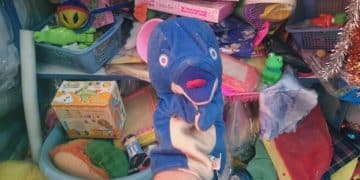Toy Donation Guide: Best Places to Donate Toys in the US (2024 Update)

Toy Donation Guide: Where to Donate Gently Used Toys in the US (Updated December 2024) provides a comprehensive list of organizations and charities across the United States where you can donate gently used toys, spreading joy and helping children in need this holiday season and beyond.
Looking to declutter and give your gently used toys a new home? Our Toy Donation Guide: Where to Donate Gently Used Toys in the US (Updated December 2024) offers a comprehensive list of places to donate, ensuring your toys brighten a child’s life.
Why Donate Toys?
Donating toys is a wonderful way to declutter your home and make a positive impact on the lives of children in your community and beyond. There are numerous benefits to donating toys, both for you and for the recipients.
Reduce Clutter and Embrace Minimalism
Toys can quickly accumulate, leading to cluttered playrooms and storage spaces. Donating unused or gently used toys allows you to reclaim valuable space in your home. It also promotes a sense of order and calm, creating a more enjoyable living environment. Embracing minimalism and reducing the number of possessions can lead to a more sustainable and fulfilling lifestyle.
Promote Sustainability and Reduce Waste
Manufacturing new toys consumes significant resources and contributes to environmental pollution. By donating toys, you extend their lifespan and prevent them from ending up in landfills. This helps to conserve natural resources, reduce waste, and minimize your environmental footprint. Donating is a sustainable alternative to discarding unwanted toys.
Help Children in Need
Many children lack access to toys due to financial constraints or other circumstances. Donating toys allows you to directly support these children and bring joy to their lives. Your donation can provide a child with a source of entertainment, learning, and comfort, helping them to develop and thrive. It’s a simple act of kindness that can have a profound impact.
- Support local charities: Find local organizations that directly benefit children in your community.
- Teach children about generosity: Involve your children in the donation process to instill values of compassion and giving.
- Consider donating other items: Many organizations also accept donations of books, clothing, and other essential items.

Donating toys is a win-win situation for everyone involved. It helps you declutter, promotes sustainability, and brings joy to children in need. When you donate, you are not just giving away toys; you are giving the gift of happiness, hope, and opportunity.
Where to Donate Toys in the US
Figuring out where to donate your gently used toys can feel overwhelming. Here’s a list of reputable organizations across the US that accept toy donations, along with details about their specific needs and donation processes.
National Organizations Accepting Toy Donations
Several national organizations have established programs for receiving and distributing toy donations to children in need. These organizations often have a wide reach and can ensure that your donation benefits children across the country.
Goodwill Industries: Goodwill accepts a wide range of donations, including toys, clothing, and household items. The items are then sold in Goodwill stores, and the revenue is used to fund job training and other community programs.
The Salvation Army: The Salvation Army also accepts toy donations, which are distributed to families in need through their various programs. They often have seasonal toy drives, especially during the holiday season.
Local Charities and Organizations
In addition to national organizations, many local charities and community organizations accept toy donations. These organizations often have a more direct connection to the community and can ensure that your donation directly benefits children in your local area.
Homeless Shelters and Women’s Shelters: These shelters often provide temporary housing and support services to families in need. Donating toys to these shelters can provide children with a sense of comfort and normalcy during a difficult time.
Hospitals and Children’s Hospitals: Hospitals often have playrooms and activity centers for children who are undergoing medical treatment. Donating toys to these hospitals can help to brighten the recovery process for these children.
Daycare Centers and Preschools: Some daycare centers and preschools may accept donations of gently used toys to supplement their existing supplies. This can help them to provide a wider range of play options for the children in their care.
- Boys & Girls Clubs of America: Local clubs often accept toy donations for their after-school programs.
- Toys for Tots: A well-known program that distributes toys to children during the holiday season.
- Local Churches and Religious Organizations: Many churches collect toys for families in need within their congregations and communities.
Choosing the right place to donate your toys depends on your preferences and the specific needs of the organization. Researching local options can help you ensure your donation has the greatest impact.
Preparing Toys for Donation
Before you donate your toys, it’s important to ensure that they are clean, safe, and in good condition. Taking the time to prepare your toys for donation will make them more appealing to recipients and will help to ensure that they can be enjoyed for years to come.
Cleaning and Sanitizing Toys
Thoroughly clean and sanitize all toys before donating them. This helps to prevent the spread of germs and ensures that the toys are safe for children to play with.
Washable Toys: Wash toys made of plastic or fabric with soap and water. You can also use a disinfectant wipe to sanitize the surface.
Electronic Toys: Wipe down electronic toys with a damp cloth. Avoid submerging them in water, as this can damage the internal components.
Checking for Safety Hazards
Inspect all toys for any potential safety hazards before donating them. Remove any broken or damaged parts that could pose a risk to children.
Small Parts: Check for loose buttons, beads, or other small parts that could be a choking hazard for young children. Ensure they are securely attached or remove them entirely.
Sharp Edges: Inspect toys for any sharp edges or points that could cause injury. Smooth down any rough edges with sandpaper or cover them with tape.
Packaging and Labeling
Package your toys securely and label them clearly before donating them. This helps to ensure that the toys arrive at their destination in good condition and that they are distributed appropriately.
- Use sturdy boxes or bags: Choose packaging materials that can withstand the rigors of transportation and handling.
- Label boxes clearly: Indicate the type of toys inside and any relevant age ranges.
- Include a note: Consider adding a handwritten note expressing your well wishes for the recipient.
By taking the time to prepare your toys for donation, you can ensure that they are safe, enjoyable, and appreciated by the children who receive them.

Alternatives to Traditional Toy Donations
While donating to established charities is a great option, there are also creative ways to give your toys a second life. Consider these alternatives to make an impact in different ways.
Toy Swaps and Exchanges
Organize a toy swap with friends, neighbors, or community groups. This is a fun and eco-friendly way to exchange toys and refresh your child’s collection. Each family brings their gently used toys, and everyone gets a chance to choose new ones to take home.
Online Marketplaces and Community Groups
Utilize online marketplaces such as Facebook Marketplace, Craigslist, or Freecycle to give away toys to families in your local area. You can also join local community groups where people often give away items for free.
Donating to Schools or Libraries
Contact local schools or libraries to see if they accept donations of gently used toys. These institutions often have play areas or activity centers for children and may be happy to receive donations to supplement their existing supplies.
Benefits of Toy Swaps: Encourage community engagement and reduce waste.
Benefits of Online Marketplaces: Connect directly with families in need.
Benefits of Donating to Schools: Support educational and recreational programs.
Exploring these alternatives can provide more personalized and impactful ways to pass on your toys to those who will appreciate them.
Tax Benefits of Toy Donations
Donating toys to qualified charitable organizations may qualify you for a tax deduction. It’s important to understand the guidelines and keep proper records to claim these deductions.
IRS Guidelines and Requirements
The IRS has specific rules for claiming charitable deductions. Ensure that the organization you’re donating to is a 501(c)(3) nonprofit to qualify. Keep records, such as receipts or written acknowledgments from the charity, detailing the donation.
Determining the Fair Market Value
You can only deduct the fair market value of the donated items. This is the price that the toys would sell for in their current condition. For items in good condition, you can estimate their value based on similar items sold online or in stores.
Record Keeping and Documentation
Maintain detailed records of your donations, including the date, description of the items, and their estimated value. For donations over $250, you’ll need a written acknowledgment from the charity.
Consult a Tax Professional: Seek advice from a tax professional to ensure compliance with IRS regulations.
Keep Detailed Records: Organize all relevant documents for tax filing purposes.
Understanding the tax benefits can provide an additional incentive for donating toys and supporting charitable causes.
Conclusion
Donating toys is a simple yet powerful way to make a difference in a child’s life. By decluttering your home and sharing your gently used toys, you can bring joy, promote sustainability, and support those in need. Consider the various donation options available, prepare your toys properly, and enjoy the satisfaction of giving back to your community.
| Key Point | Brief Description |
|---|---|
| 🎁 Benefits of Donating | Declutter, help children, promote sustainability. |
| 🧸 Where to Donate | Charities, shelters, hospitals, and online groups. |
| 🧼 Preparing Toys | Clean, sanitize, and check for safety hazards. |
| 💰 Tax Benefits | Donations to qualified charities may be tax-deductible. |
FAQ
▼
Most organizations accept gently used toys, including plush toys, board games, puzzles, and educational toys. It’s best to check with the specific charity for their guidelines.
▼
You can search online for local charities, homeless shelters, or community centers that accept toy donations. Websites like Charity Navigator can help identify reputable organizations.
▼
It’s a good practice to include fresh batteries if the electronic toy requires them. This ensures the toy is ready for immediate use and enjoyment.
▼
Most organizations prefer complete games and puzzles to ensure children can fully enjoy them. If a game is missing pieces, it may not be accepted. Check with the organization.
▼
Ensure that the organization is a registered 501(c)(3) nonprofit. Obtain a receipt for your donation, and consult with a tax advisor to understand the deduction process.
Conclusion
Ultimately, the Toy Donation Guide: Where to Donate Gently Used Toys in the US (Updated December 2024) offers a tangible way to give back while decluttering. By choosing the right charity, preparing the toys thoughtfully, and understanding the potential tax benefits, you can make a significant difference in a child’s life.





